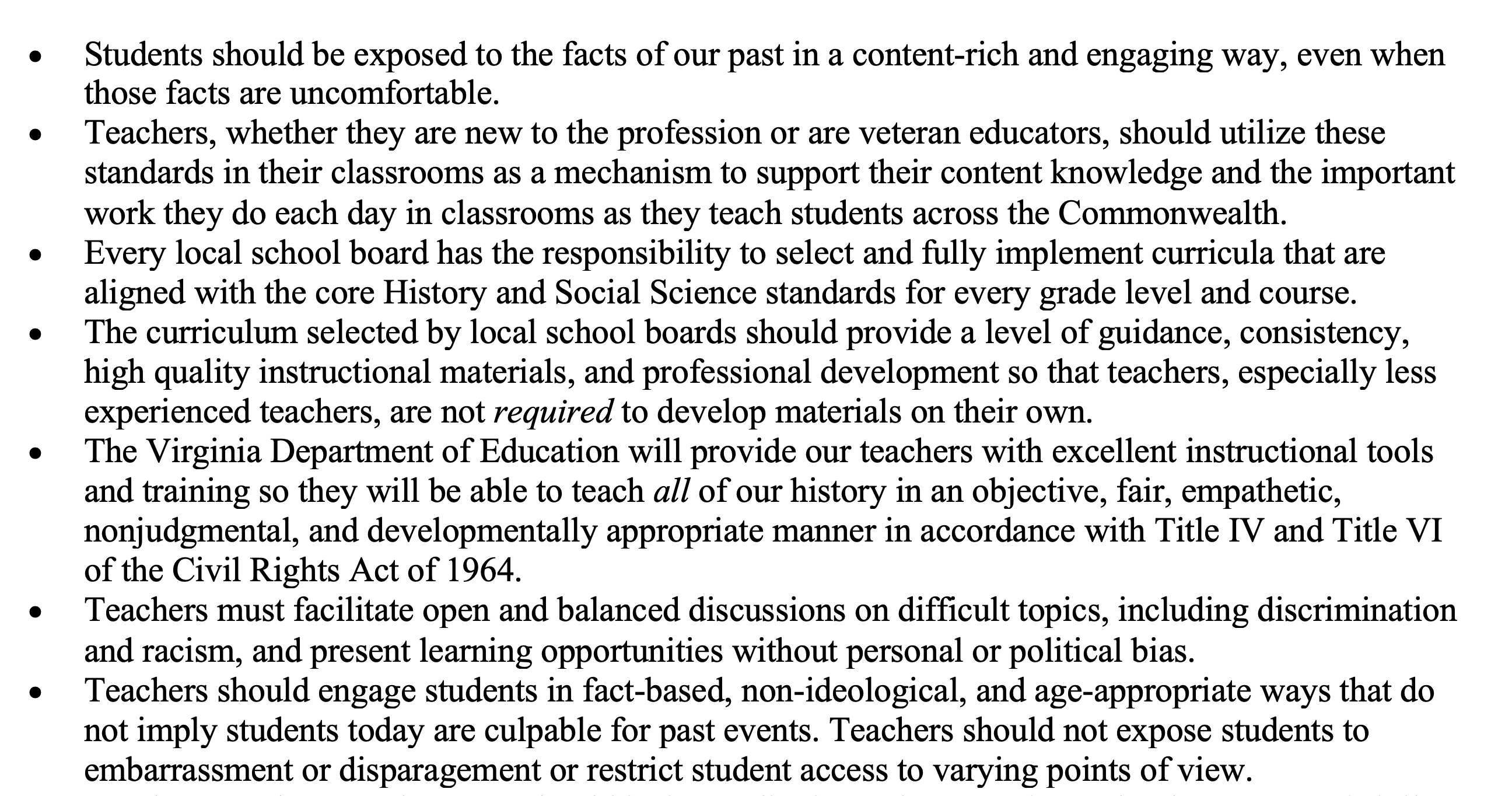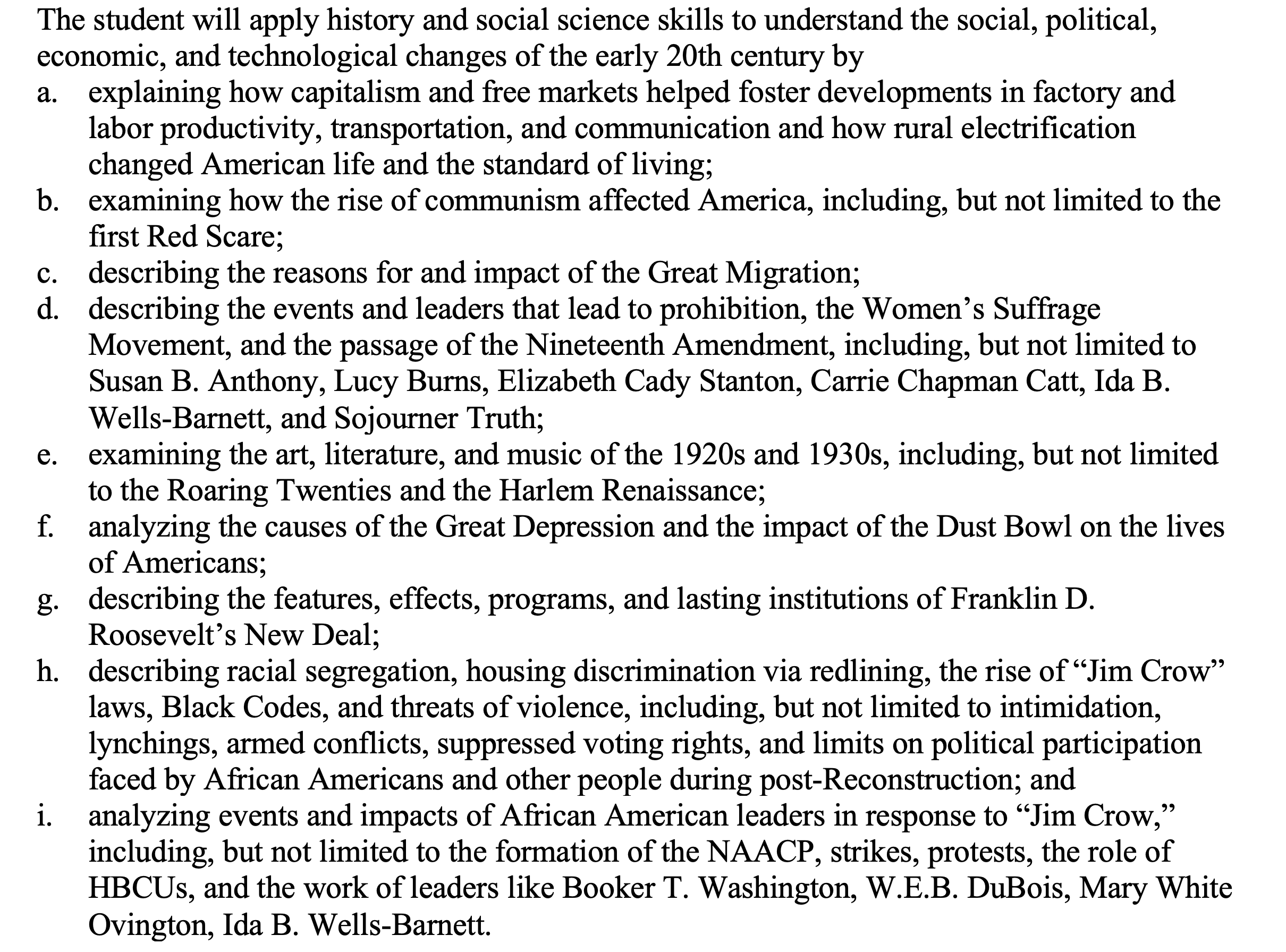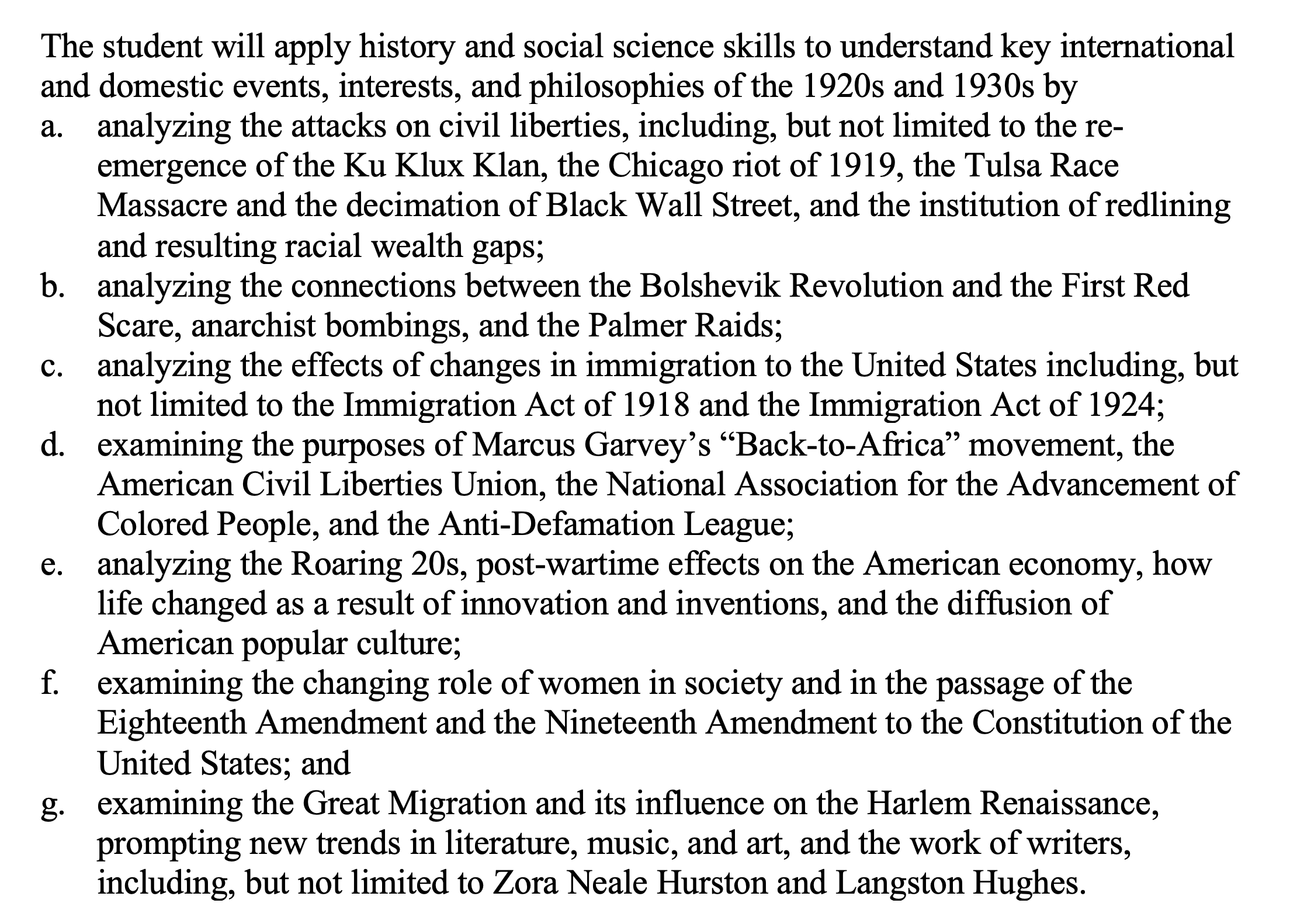Editor's note: This was first published on Eduwonk, the author's blog.
If it seems like, increasingly, vibes or narratives are driving perceptions about education and education policy, well that’s because it’s happening. There has always been some of this, but it seems more acute right now. I’ll use a few Virginia examples to make the point and then get into why it matters more generally.
The recent election results in Virginia are being portrayed as some sort of landslide and a referendum on a range of issues. This makes people feel good, but it’s not accurate. The election was close, it was really about one issue, and that issue was not education.
None of this is to say the election is not consequential; it is substantively and politically. The Democrats had a good night, and it was a rebuke of Republicans and the governor. But it’s overhyped. Democrats will control the state Senate 21-19 and the House of Delegates 51-49. There were 70 Republicans and 70 Democrats in the legislature before the election. Now it’s a 72-68 Democratic advantage. Control matters in some important ways, but that’s close. (Most of our elections have been close lately. One reason a lot of people are so antsy about 2024 is that, in 2020, a shift of less than 50,000 votes would have us in the middle of a second Trump administration right now. Trump won by 80,000 or so votes across key states in 2016. Not a lot of wiggle room.)
Via Chris Saxman’s newsletter, here are some Virginia data you probably have not heard about:
40 State Senate races
Democratic votes—1,190,320, Republican votes—1,178,918.
Difference: 11,402, or 0.5 percent of the total.
Subtract the 35 uncontested races (20D/15R).
Republicans won 832,213 to 821,933 (+10,280).
100 House of Delegates races
Democratic votes—1,148,027, Republican votes—1,132,063.
Difference: 15,964 or 0.7 percent of the total.
The two closest House races (HD – 21 & 97) were decided by 1,826 votes.
A switch of 914 votes and the Republicans would have a majority in the House.
In the Senate, the two closest races (SD 30 & 31) were decided by 6,494 votes.
A switch of 3,248 votes and Republicans win Senate, too.
Again, better to be the Democrats than the Republicans, but that’s tight.
Second, there was one issue driving this election: abortion rights. You see this in what the ads were about, you see this in the results, and you see it in what people in the state are saying. You see it everywhere except for people trying to make a point about this or that issue they really care about and so want the election to be about.
If there was a secondary issue after abortion, it’s probably redistricting that makes districts increasingly insurmountable for one party or the other. The rural-urban-suburban divides continue to deepen, which will impact school finance reform—something Virginia desperately needs.
Overall, the Republicans didn’t really have a message, but I’m not sure it would have mattered if they did. The bottom line is voters simply don’t trust Republicans with the keys to the car if first trimester abortion rights are in play. Ann Coulter said abortion is the Republican version of “defund the police.” She’s wrong; it’s worse in terms of political damage. A Democratic candidate who was literally caught performing sex acts for money on the internet—after she had announced for public office—nonetheless performed pretty well on election day and lost a close election. That should tell you all you need to know. If not, it’s also why a governor with approval ratings in the mid-50’s couldn’t drag candidates over the finish line in close races. Dobbs is an absolute political millstone for Republicans. People will do gymnastics about how this was about education, but outside of school board races, that obscures the core dynamic: If Democrats can run marginally compelling candidates in competitive races, they will win until the Republicans figure out how to slip this abortion noose—of their own creation, it should be noted. Generally, I don’t think these off-year elections are as predictive or revealing as some people think, but the reproductive rights signal seems pretty clear.
But that sucks to write again and again if you’re an education reporter or opinion writer. It doesn’t really help you much if you’re an education activist. It matters greatly to governmental politics, but means electoral politics are being fought out elsewhere. So, for instance, even though transgender issues were a low priority for Virginia voters this cycle, we’ll hear a lot about how that was a big driver.[i] It wasn’t.
Optimistically, Virginia voters seemed to have a refreshing no-drama bent. School board elections in some key locations—Gloucester and Spotsylvania—tossed out divisive and bombastic types. But it wasn’t just conservatives getting the boot. Loudoun voters tossed out the progressive prosecutor who oversaw the circus surrounding sexual assaults in schools there—including taking the unusual step of personally handling the prosecution of the father of one of the victims for a disorderly charge (he was subsequently pardoned). Voters there also wiped the board slate clean (also several close races) after multiple reports showed the sexual assaults were mishandled—and that the whole episode was narrative driven. The message across these diverse geographies seems less partisan than just: Be more normal.
Consider this vibes-heavy piece in The New York Times. Passages like this make good copy but are meaningless in practice:
The Campaign for Our Shared Future, a progressive group founded in 2021 to push back on conservative education activism, said on Wednesday that nineteen of its twenty-three endorsed school board candidates in Pennsylvania, Ohio and Virginia had won.
The American Federation of Teachers, the nation’s second-largest educators’ union and a key Democratic power player, said that in 250 races it had tracked—a mix of state, local, and school board elections—80 percent of its preferred candidates won.
On the right, Moms for Liberty, the leading parental-rights group, said 44 percent of its candidates were elected.
“Said...”
It doesn’t seem like Moms for Liberty had a good night, but I don’t trust any advocate’s numbers on school board races. What matters is what happened in highly contested races, not all the endorsements. What size geography are we talking about? For example, is it some yo-yo somewhere getting headlines but impacting relatively few students, or someone in a big district? What happened where control was at stake? And this conflates school board candidates and other races, which turn on different issues. Both Moms for Liberty and the AFT use slippery criteria.
And then there is this:
That state’s Republican governor, Glenn Youngkin, has been a standard-bearer for parental rights, pushing for open schools during the pandemic and restricting how race is discussed in classrooms.
Supporters of school vouchers had hoped that a Republican sweep in the state would allow for progress on that issue.
Even assuming a world where Republicans had won by comfortable margins, school choice was still going to be a dogfight in Virginia. The state has basically a fake charter school law, and even university-sponsored lab schools remain controversial. There are both obvious and subtle reasons for that, but it’s not just Democrats in the way, though that’s a convenient narrative. You see that dynamic in some other states, as well. So, sure, choice supporters may “hope” or “feel” that way. Doesn’t mean they are right. School choice in Virginia is about more than any one election.
And, look, on restricting race in classrooms, I don’t know what to tell you. It’s a vibe, sure, but read the standards about that. If you really want to make a case that schools should be doing stuff that violates the Civil Rights Act, I’m all ears, but I don’t see it.
Most recently, James Traub, hardly a conservative, actually read them and was like, “pretty good,” for Politico. The Washington Post’s Editorial Board and others grudgingly say the same thing. Below are three examples in the standards. If this is restricting teaching about race then kids in most states would be lucky to be so restricted.

If you can’t live with this you, need to send your kids to private school.

Example of a high school standard. Most of this content was not in prior standards.

It wasn’t just the Times. My favorite ed publication wrote this:
Virginia: In Spotsylvania County, where a conservative board was among the first to implement Youngkin’s education platforms, all four GOP-endorsed candidates lost to more liberal opponents. One who went on to defeat, Kirk Twigg, suggested that books pulled by the board from school libraries should be burned. He lost by almost 25 points, according to the Associated Press. In Loudoun County, which became ground zero for a host of culture war issues, particularly during Virginia’s prolonged school closures, all nine board members will be new in this upcoming term. “It was chaos for the last four years and I’m glad the election is finally over, and we can get to work,” said Deana Griffiths, who defeated one of the two board incumbents who sought reelection.
The law in question is actually this one—and it’s causing confusion. Even the law’s patron (who lost in a close race that turned on, you guessed it, abortion) says it’s being used in unintended ways. You can read about the rolling chaos in Spotsylvania. They were doing a lot of stuff, but they were not implementing some coherent agenda the way this implies.[ii]
I don’t raise all of this to argue that Youngkin hasn’t made missteps or that the Democrats didn’t have a good night. Moms for Liberty fell short and seem a little high on their own supply, etc., and I’m personally glad to see new leadership in Spotsylvania for the kids there.
Rather, the point is that it’s all illustrative of a broader problem plaguing us right now: narrative- or vibes-driven reporting and analysis fueling vibes-driven discourse. Details matter. They matter to understanding, and they matter to effective strategy.
Again, look, I get it: If 2024 is about Dobbs, the economy, and democracy, as it seems like it might be, then it will be a pretty boring cycle to be an education writer, at least at the national level. Still, resist temptation to fan culture war flames where they don’t exist.
Some of this rigid narrative-driven, confirmation-bias-confirming reporting is the product of echo chambers, social media, intense polarization, and the idea that nuance is giving care and comfort to the “enemy.” When The New York Times committed an act of journalism by daring to report on an evolving and complicated set of medical questions about transgender youth, all hell broke loose. People notice that.
(Also, of course, no one can even agree on what a book ban is, or what CRT is, and so forth. Some of the views cited in the media as outliers are actually majority-held viewpoints. There was an amusing headline recently about how majorities of voters support extreme conservative education positions. It’s a muddled and confused debate only made more muddled by rampant polarization and narrative driven reporting.)
Here’s the “to be sure” paragraph: Doing general interest writing on deadline is harder than it looks. We all make mistakes. These issues are complicated and really disparate in a country with 13,000 school districts and fifty states doing different things. Still, there sure does seem to be room to do better in terms of not just flattening everything out, right?
We all know good information is instrumental to good decision-making. We talk about that a lot around here because it matters. A lot. Narrative-driven coverage distorts things and contributes to our growing, general misinformation problem. That’s not pro-or anti-reform, rather it’s pro-good decision-making.
Earlier this month, we got another look at the rampant confusion about pandemic learning loss and its impact.[iii] Here’s Alyssa Rosenberg on that. This confusion is part and parcel of a vibes or narrative approach to what’s going on.
Yes, the labor of keeping informed has increased. And the decline in nuance in media coverage has helped fuel a rise in the need for high-quality proprietary analysis. People in strategy, sales, and key decision-making roles need to know what’s going on at an accurate and granular level, and open-source information is not reliable. But that obviously creates an inequity: good information for people who can afford to hire someone (like me) to do an analysis—and narratives, vibes, and acrimony for the proles. It’s not just a problem on education, and it’s not good for us.
[i] This is another example of the narrative problem. There is a big gap between what the public thinks on this issue and schools and what reporters think and that shows up in the coverage. Glenn Youngkin’s position basically aligns with a majority of Virginians, which is why it wasn’t a big issue except among the columnist set. That’s neither here nor there about whatever your view of the correct policy happens to be, you shouldn’t base your views on public opinion polls, but it’s essential context to understanding the dynamics of this and any issue.
[ii] Disclosure: Backstory on my minor role in that.
[iii] The brief was produced by Dan Goldhaber at CALDER and Maia Goodman Young. BW works with Dan and CALDER. You should read it anyway.


